Game Journal
Game Design Workshop by Tracy Fullerton
Week 1 & 2 Responses
GDW Foreword/Preface/Introduction
"How is it possible that the simple rules of chess and go continue to evolve new strategies and styles of play, even after centeries of human study?" I think this question is very relatable to the project that we are doing now. Playing different games we experience and learn something from it. Our game Spooky Strategy's main objective is to collect and obtain a full set of body part cards which was inspired by Mancala's objective of collecting the most beads from the playing field. From then on we continued to discuss and brainstrom ideas of what we could do with the theme of collecting, but these ideas were possible because every person has their own view or perspective about the "magic" of a game and being inspired by that "magic" to create something new. These different views and discussion of ideas is what helps to continue to evolve new strategies and styles of play. As I was reading about how game design is everywhere, I kept remembering about how I would image games or think of games when I was little. While walking down the street or just by being in my living room I would image situations like the floor is lava, don't touch the floor, or there is an evil fly that is out to get my food, I have to hunt is down with a fly swatter! What really peaked my interest were the questions: what will the world look like in another ten years, when the children who grew up learning from and thinking in game systems become adults? What games will they want to play then? What systems will they engage with to learn more about the world? These questions will continue to be in the back of my mind as I continue to design games. How can I create a new and engaging experience for players?
GDW Chapter 1: The Role of the Game Designer
I liked how games were compared to as a living system, transforming throughout their development cycle. I think that this is a great mindset to be in when creating games because "no rule is set in stone. No technique is absolute. No scheme is the right one" allows for so much room for improvement in creating games. Sometimes I keep thinking that once I make a rule or design I have to stick with it because that is the base or foundation for my game and I keep thinking that if I were to change it then it could lead to more problems for me. This way of thinking constrains me because I keep forgetting that I can always change rules or designs to better my game experience and that if I don't change something then my game will never improve. This ever-changing system is also why "games are fragile systems, and each element is inextricably linked to the others," but I also think that this is what makes game design fun because now the game that you are creating is also a game in itself. I think it was also good advice that you shouldn't begin making a game with a deep understanding of your player experience goals and core mechanic because once you move further on into the production of the game, it becomes difficult to change that goal and core mechanic is flaws aren't found early on.
GDW Chapter 6: Conceptualization
It was interesting learning about the best practices for brainstroming. When I brainstorming I often like to edit and go back to my ideas and think more about them, but that isn't what brainstorming should be. I shouldn't be pondering about how an idea would work instead I should just be writing quick ideas down and look through them later. I think I will try to do more mind mapping involving the core concept of a game. It is definitely different because the map should involve verbs or actions and the feelings associated with those actions around the central concept, this is something that I have never really done. I should also do the Stream of Consciousness more often, writing down and spewing words on a particular topic for 10 minutes as quickly as possible. I think this will help me out of the habit of going back to edit my ideas.
GDW Chapter 7: Prototyping
I don't create physical prototypes often so I was really interested in how you can create a physical prototype for a digital game and what it does. Physical prototyping allows you to build a structure for your games, for a digital game the feeling of moving through a 3D space is only one component of it. What physical prototyping does is that it forces you to think through the design elements and define them, it is a good foundation to be able to be built upon. You shouldn't design the whole game because that could make you more confused and overwhelmed, instead you should isolate the core gameplay or an action that the player repeats the most often. After building the foundation you can continue with the structure of the game such as rules and then you can playtest. WIth physical prototypes, you aren't coding or putting so much work into building the work for your game. With physical protoyping you can make an "ugly" version of your game just to see if it works. I definitely will do physical prototyping more often because it really helps to build your game.
GDW Chapter 12: Team Structures, Agile Development
Communicating with your team is essential to the outcome of creating games. You want to get your point across to other people. Setting an agenda for meetings is also important as during meeting you can easily become distracted and go off topic. This also means that the people should know about the goal beforehand, so that they can come prepared to share ideas. It was interesting to learn about the communication line between the developer and publisher. This meant that there is one person from each team that is responsible for commuication between the two groups, it would be problematic if there were team members making their own decisions. Communication is a key component in formulating ideas and maintaining consistency while creating a game.
Carcassonne by Klaus-Jurgen Wrede
Carcassonne is a game that was inspired by the medieval southern France fortress, Carcassonne, and it is a tile-based board game for two to five players. The game board itself is a medieval landscape that are built by the players as the game goes on. The game starts with a single terrain tile facing up and the 71 other tile are shuffled face down. Each turn, players pick up a new terrain and must place it next to tiles that are faced up. Players have to place the tile in a way that connects features such as roads, fields to fields, and cities to cities. After placing down a tile the player can choose to station a piece called "follower" or "meeple" on a feature of that newly placed tile. You can't claim anything that has been claimed by other players, but it is possible to share, for instance if two tiles each having a meeple is connected into a single field by another terrain tile. During a player's turn, cities cloisters, and roads are scored when they are completed whereas fields are scored when the game ends. The game ends when all the terrain pieces are placed and the player who scores the most points win.
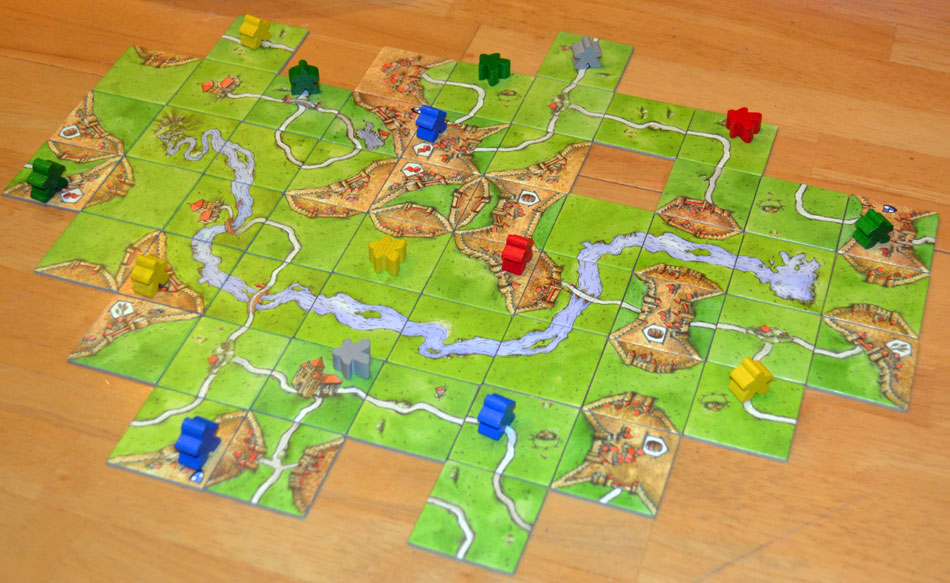
Exercises: 2.1: Think of a Games_2.3: Objectives_2.4: Rules_2.6: Challange_6.4: Blue Sky Brainstorm



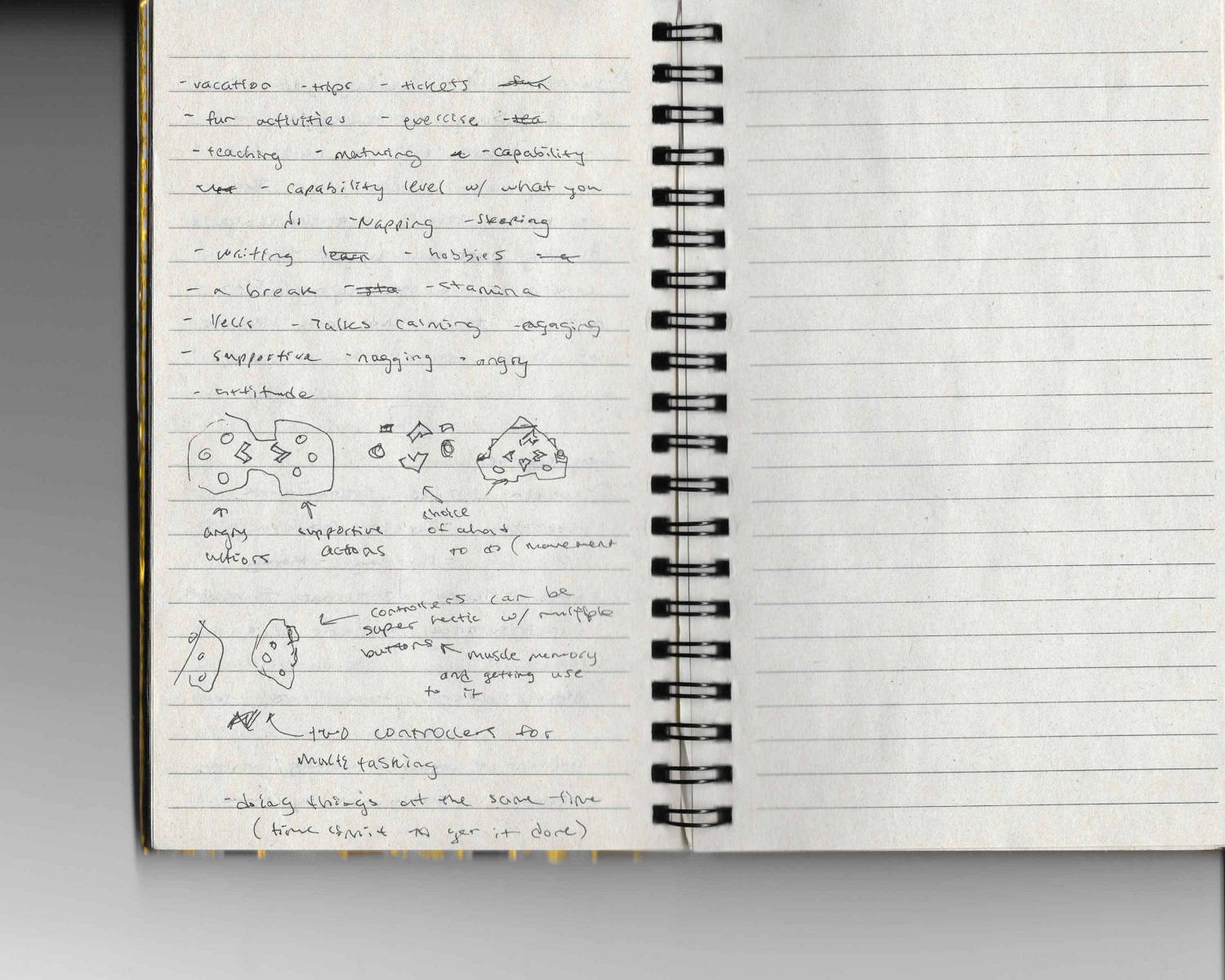
GDW Chapter 2: The Structure of Games
It was interesting to read about how much games can be similar to one another and in what ways they can be. A simple connection such as both Quake and Go Fish, how they both described the experiences designed for players, is still so important because it shows the influence of players when creating a game. Players make decisions, they are constantly taking action in a game, they are invested, they are potential winners, and they have to voluntarily accept the rules and constraints of a game. In the text it describes the term "lusory attitude" which is something that I have never heard of before. The "lusory attitude" of the player is the "curious state of affairs wherein one adopts rules which require onto employ worse rather than better means for reaching an end." For instance, if an object was to shoot an arrow and get the most points, then the obvious choice is to be as close to the target as possible. But, with constraints such as you have to be a certain distance away and it is about your aim, then it changes how a player can play. Voluntarily acceptance of the rules in games is something to be considered of in game design. Players have to play in the world with these constraints, so what about these constraints are important to your game and what can you change to better the experience of players.
GDW Chapter 3: Working with Formal Elements_GDW Chapter 3: Sidebar: The Mechanic is the Message by Brenda Romero, Atari, Sir-tech, EA
In chapter was about the elemets in games such as players, objectives, procedures, rules, resources, conflict and boundaries. Reading about player interaction patterns was intriguing and it made me think about all the games that I had played and placing a interaction pattern for it. The image that they had also provided was also helpful in imaging the patterns and how it would affect gameplay and their participation.
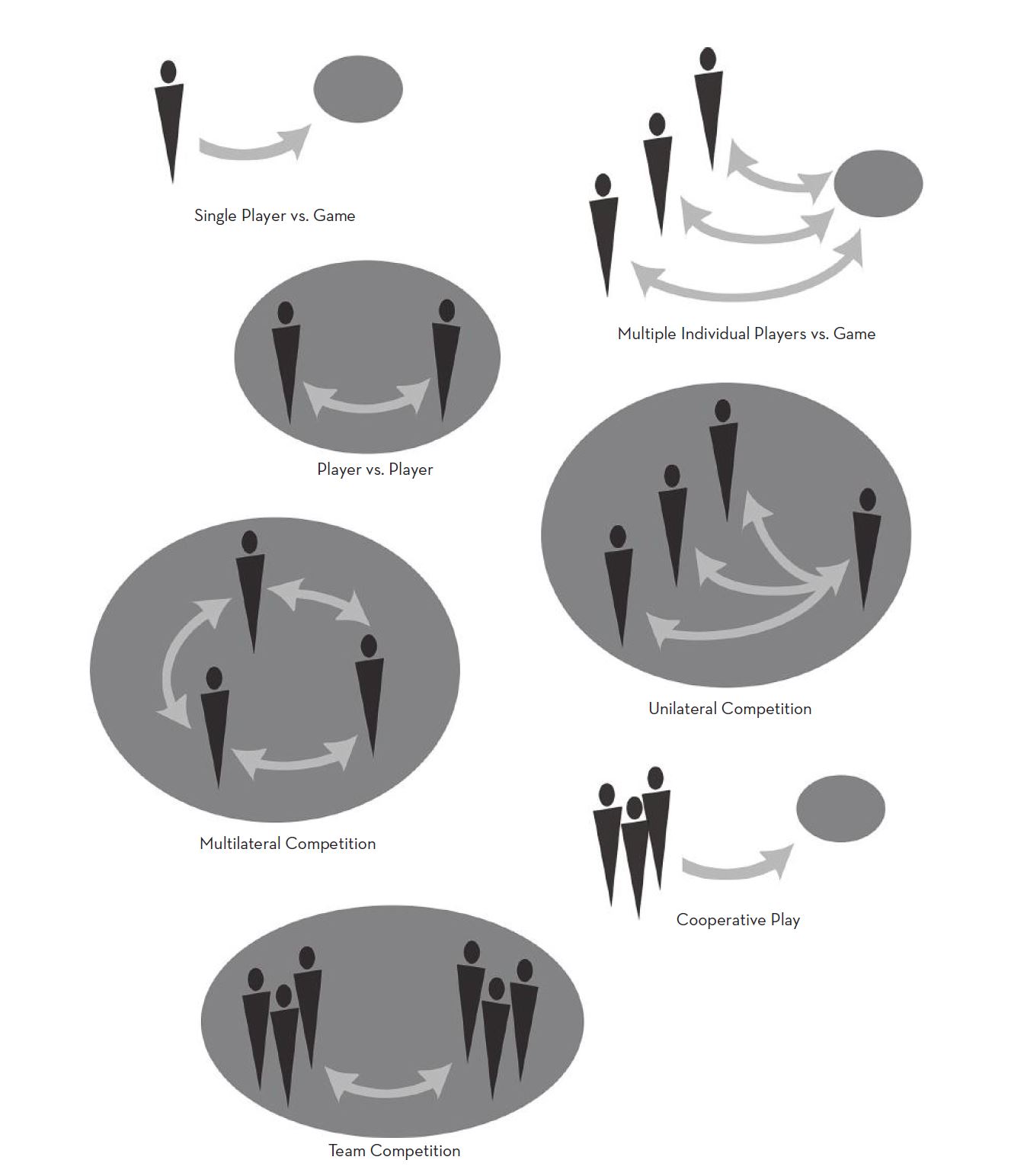
Reading about different objectives was also interesting and objectives impact the tone of the game. Some objectives mentioned includes capture, chase, race, forbidden act, construction, and outwit. Capture objectives take or destroy something of the opponents, our game Spooky Strategy falls under this category as you try to capture body cards from other players. I think this objective makes games more agressive, because if you choose to play passively then you wouldn't be able to take or destroy your opponent, unless there is a rule where playing passively is the key to capture. Chase objectives is where you have to catch an opponent or run away, if you are the player being chased. This objective could also work for our game because before you can attack another player to get their card, you have to chase them first. Race objectives are where player must reach the goal before other players. When I think of race game I think of Mario Cart with its added components like bananas and speed boosts, race games are fun because it is about going fast against your opponents. The forbidden act objectives are intersting as the objective is to break the rules, like Operation. It would be interesting to make this objective into a digital game. Outwit objectives is where you use wits to gain and use knowledge to defeat the other players. I also think that this objective would be very cool to make for digital games. This objective relies a lot on communication so there are interesting social dynamics but I also think that this idea of communication is what makes it hard to create a digital game for.
The Mechanic Is The Message was a very interesting read as it asks the question, "can game mechanics capture and express difficult emotions like photographs, paintings, music and books?" Brenda Romero talks about how her daughter learned and has knowledge about the Middle Passage but what was missing was a sense of emotion. In order to get that connection, she created a game, Romero's daughter was making families (sorted by color) and an hour into it, Romero grabbed some of the pawns and put them on a boat (index card) and next to that a pile of pennies which served as food. The rules were that it takes 10 turns to cross the ocean, each turn you would roll a die to see how much food would be used. Half way through the game, the food was about to run out and Brenda says "we can keep going and hope we make it, or we can put some people in the water." After saying this the daughter was shocked asking, "did this really happen?" After reading this passage, it made me think, "oh, I want to make games like this too, how do I make players feel connected?" Having the mechanic as the message is such an intriguing concept because it makes you look at games and create games with a different perspective, especially if that specific story has to stay and has to create a sense of emotion. This is similar to the concept that was brought up before about creating the story first then the mechanic, rather than mechanic first then the story.
GDW Chapter 5: Working with System Dynamics
This chapter talks about the system of games and how interaction with different elements influences the structure. The relationships within the system can be expressed differently. For instance, a game played on a board expresses the relationship between objects, the player, and location of these objects. Basic elements such as objects, behavior, properties and relationships can create different interactions and change in games. Even if you have all of these elements, there is an importance of balance. Designers should test the system to see if there are any loopholes during play, then afterwards comes fairness and balance along with making the game fun and challenging. Designers should also have a clear idea of the target audience, creating an experience and blending elements to make the gameplay interesting and enough variety to keep players interested.
GDW Designer Perspective: Frank Lantz
I also agree and believe in the prototype > playtest > redesign loop method for making good games. Feedback is so important, taking in what people say, their reaction, how players play and their incentives. It gives you another perspective on the game and how other view it, it can also act as a refresher. When looking at your own game for so long and only thinking about it, making edits over and over again, can fog your view on the game and what it originally was suppose to be. Without this process, there would be a lot of holes in games as so much is revolved around playter experience.
Sky: Children of the Light by Jenova Chen
Sky: Children of the Light is a third-person indie, modern, interactive adventure, mobile game. Your obejctive is to relieve lingering spirits shown as translucent shadows. With virtual joystick control, you move through the world, jumping as you tap and soaring as you hold. Similar to Journey there is a sense of freedom in the world, with the simplicity of the 3D models and how the music, the colors, and actions influence the ethereal feeling of the game. Not only that but Sky's imagery is inspired by constellations, which also adds to the ethereal and mysterious feeling. The game can be completed by yourself but with other players you can unlock hidden doors and side areas. You can invite friends to play on multiplayer, but you can also just meet people and explore the world together. You can sing together by tapping on your characters or you can hop through fields, skating and racing one another. With up to eight players, you can join hands and fly together through the world. These multiplayer encounters are interesting as it helps newer players get use to the world, it makes no one playthrough the same as before and it also gives players the choice of leaving and doing their own thing or staying together with the group.

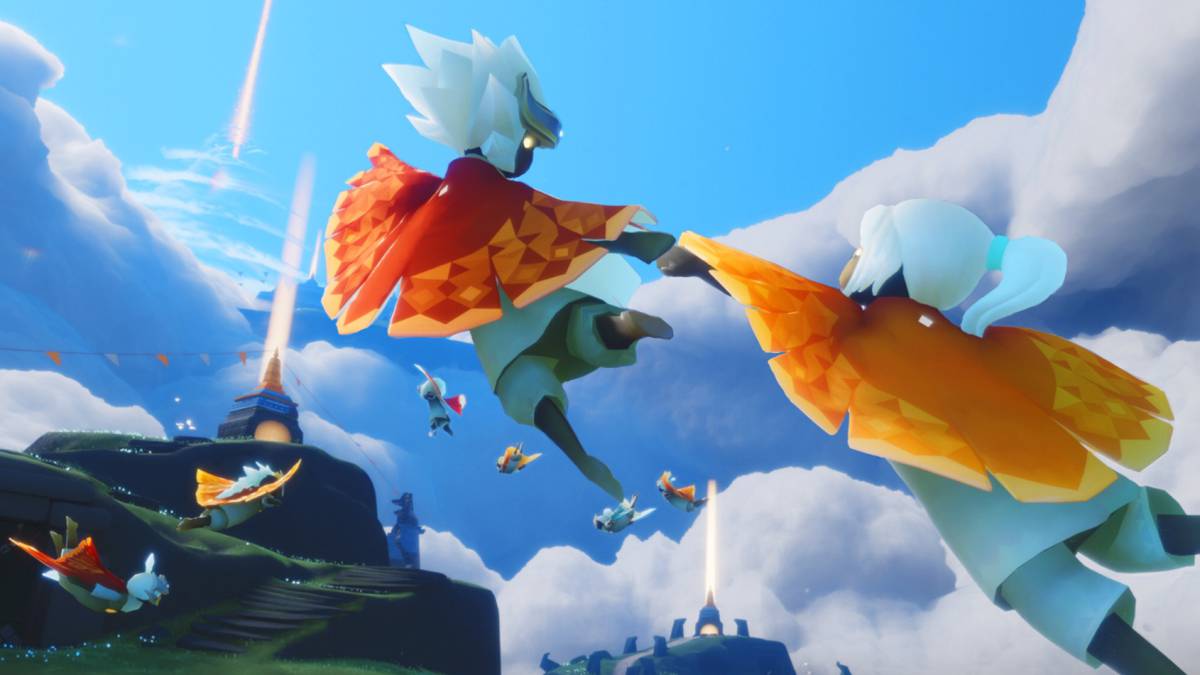
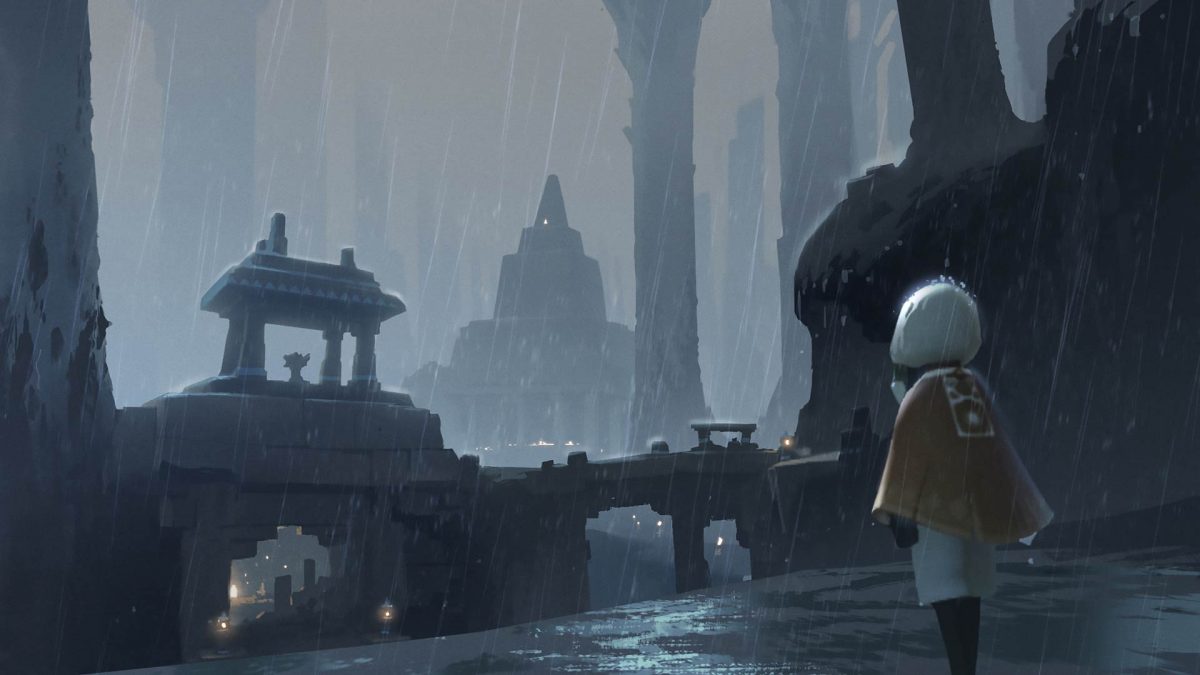
Get Spooky Strategy
Spooky Strategy
Spooky strategy is a board game for 3+ players, whose objective is to collect a full set of body parts.
| Status | Released |
| Category | Physical game |
| Author | JustinaY |
More posts
- PostmortemSep 12, 2019
- Playtest Notes/VideoSep 09, 2019
Leave a comment
Log in with itch.io to leave a comment.